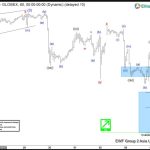Economists missed the boat again this month expecting a small rebound in existing home sales. Instead, sales fell 0.7%.
Existing home sales came in at 5.34 million units seasonally-adjusted annualized (SAAR).
The Econoday consensus estimate for home sales was 5.42 million units in a range of 5.39 million to 5.51 million. Thus sales were below the lowest estimate.
Housing is the one sector of the economy not showing any life. Existing home sales managed only a 5.340 million annualized rate in July, missing Econoday’s consensus of 5.420 million for a 0.7 percent dip from June and the fourth decline in a row. This is the lowest rate in 2-1/2 years. Year-on-year, resales are down 1.5 percent.
Both single-family homes and condos show similar weakness, the former down 0.2 percent on the month and down 1.2 percent on the year at a 4.750 million rate. Condo resales, at a 590,000 rate, fell 4.8 percent on the month and are down 3.3 percent on the year. All regions show similar declines on the year with the West posting the only monthly gain in July, at 4.4 percent.
Supply doesn’t offer any relief either, down 0.5 percent to 1.920 million total resales on the market. Relative to sales, supply is unchanged at 4.3 months. And prices fell in the month, down a monthly 1.5 percent to $269,600 for a 4.5 percent yearly gain that stands in contrast to the yearly decline in sales in a comparison that doesn’t point to price traction ahead.
Rising mortgage rates aren’t a plus for housing and neither are construction constraints for labor and materials that are slowing the new home market where weakness bleeds into resales. Third-quarter GDP looks to be very solid but apparently won’t be getting much lift from residential investment.
Home Price Gains Dampens Demand
For a change of pace in his usual tirade about supply, NAR chief economist Lawrence Yun says Home Price Gains Continue to Dampen Demand.
Lawrence Yun, NAR chief economist said ongoing and solid gains in home prices are beginning to reduce buyer demand. “Led by a notable decrease in closings in the Northeast, existing home sales trailed off again last month, sliding to their slowest pace since February 2016 at 5.21 million,” he said. “Too many would-be buyers are either being priced out or are deciding to postpone their search until more homes in their price range come onto the market.”
Any slack in demand however has not begun to lower prices. The median existing-home price for all housing types in July was $269,600, up 4.5 percent from last July’s median of $258,100. It was the 77th straight month of year-over-year gains. The median single-family house price rose 4.6 percent on an annual basis to $272,300 and a 3.2 percent gain put the condo median at $248,100.
The inventory of unsold homes had increased in June by 4.3 percent, but the trend did not hold, falling back by 0.5 percent in July. The 1.92 million existing homes for sale represented a 4.3-month supply at the current sales rate. Both measures of inventory are the same as they were in July 2017.
Properties typically stayed on the market for 27 days in July, up from 26 days in June but down from 30 days a year ago. Fifty-five percent of homes sold in July were on the market for less than a month.
“Listings continue to go under contract in under a month, which highlights the feedback from Realtors® that buyers are swiftly snatching up moderately-priced properties,” said Yun. “Existing supply is still not at a healthy level, and new home construction is not keeping up to meet demand.”








Leave A Comment